Siblings Helen Brenner | Name Evelyn McHale Occupation Bookkeeper | |
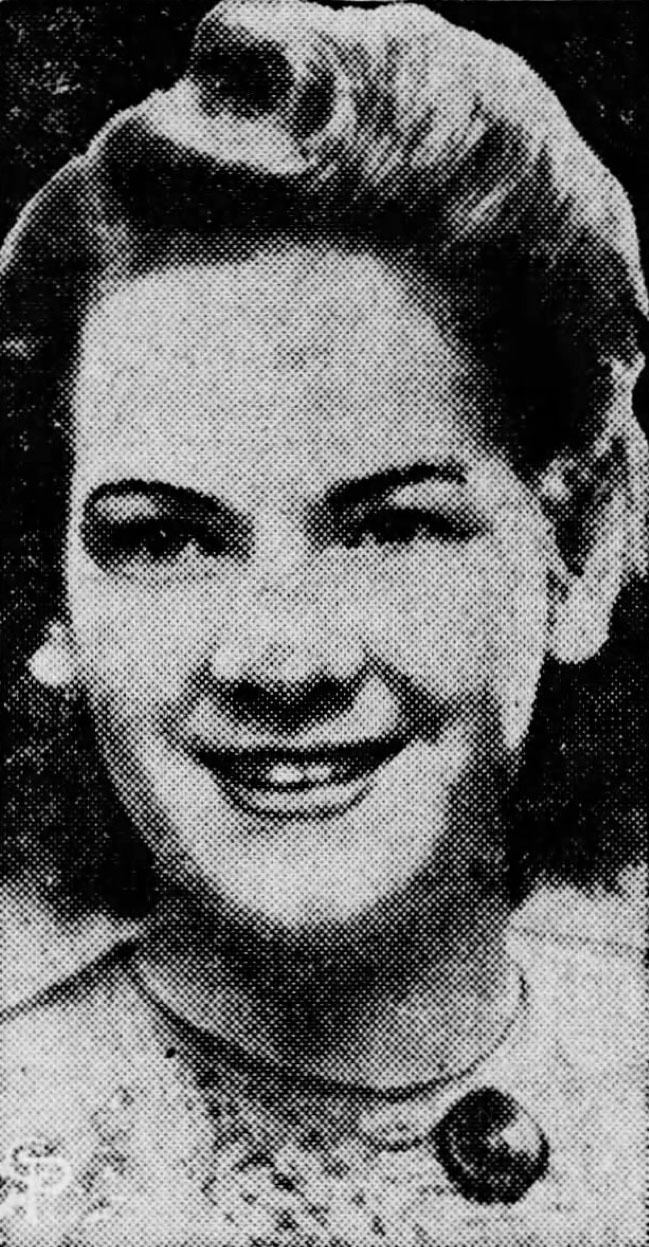 | ||
Full Name Evelyn Francis McHale Parents Helen McHale, Vincent McHale Died May 1, 1947 (aged 23) New York City, New York, U.S. Similar Omayra Sánchez, Dorothy Counts, Joe Masseria | ||
Evelyn Francis McHale (September 20, 1923 – May 1, 1947) was an American bookkeeper who committed suicide by jumping from the 86th floor Observation Deck of the Empire State Building on May 1, 1947.
Contents
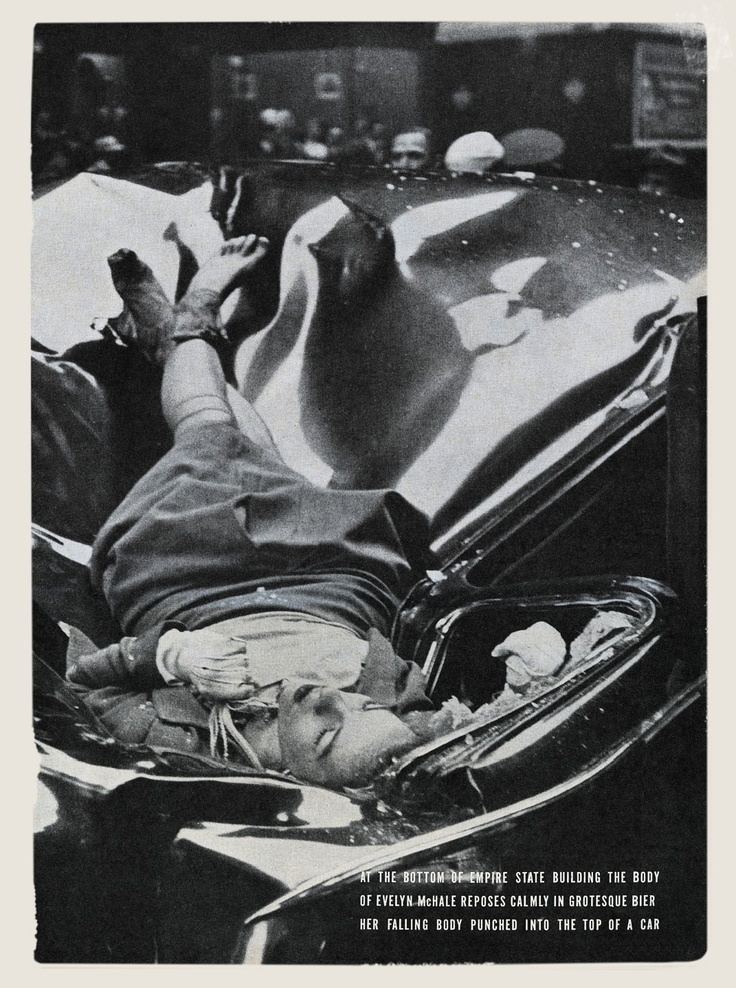
A photograph taken four minutes after her death by photography student, Robert Wiles, is now considered among the most iconic suicide photographs in history, referred to as "the most beautiful suicide".
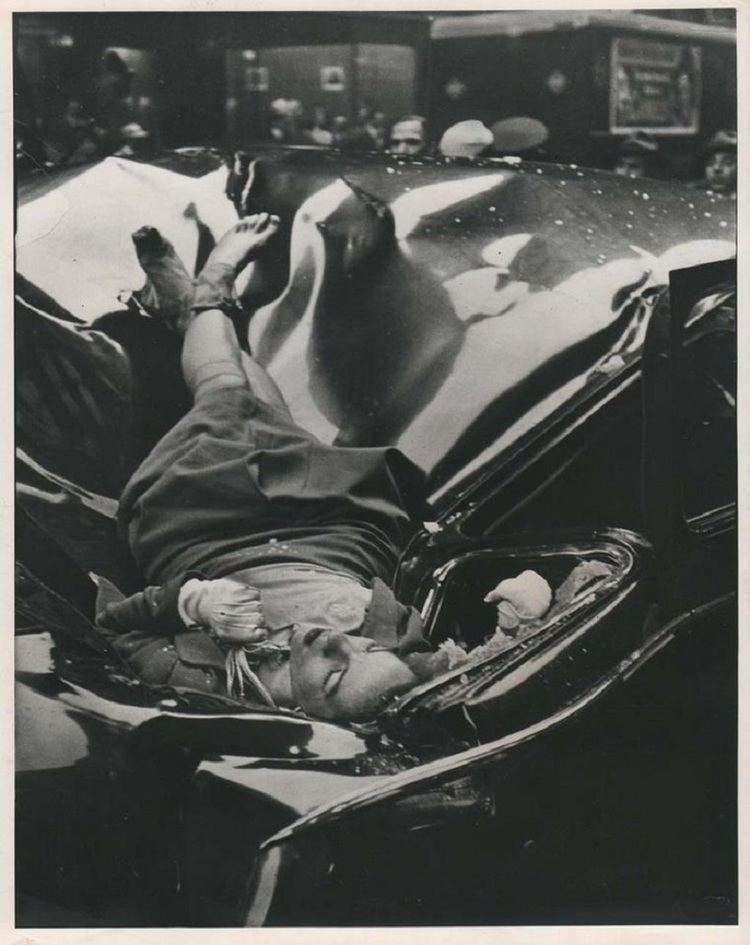
Life
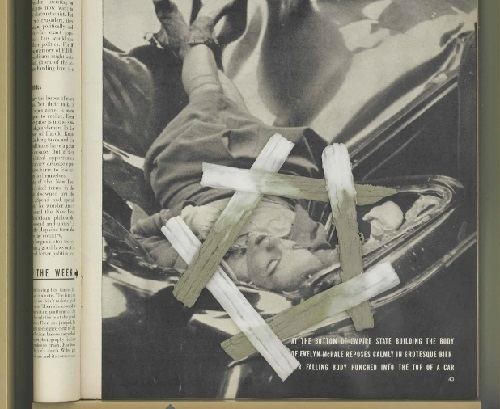
Evelyn McHale was born in Berkeley, California one of nine children to Helen and Vincent McHale. Vincent was a bank examiner and relocated to Washington D.C. in 1930. Her parents divorced. Vincent gained custody of all children and moved to Tuckahoe, New York.
After graduating from high school Evelyn joined the Women's Army Corps, and was stationed in Jefferson City, Missouri.
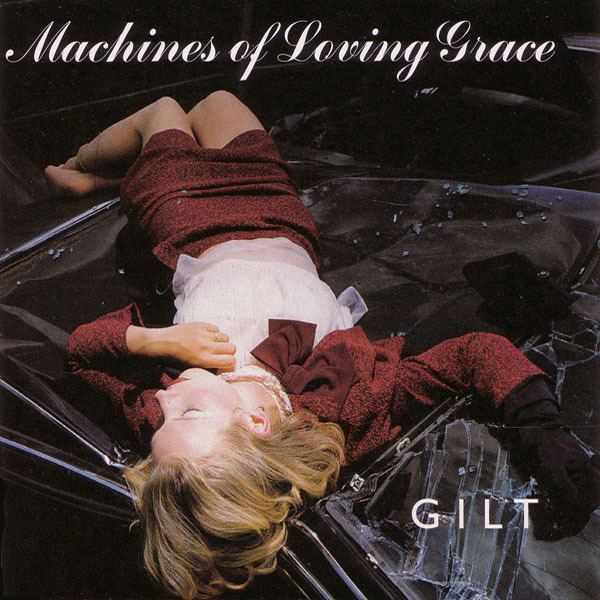
She later moved to Baldwin, New York and was employed as a bookkeeper at the Kitab Engraving Company on Pearl Street. She met her fiance Barry Rhodes, a college student discharged from the United States Army Air Force.
Death
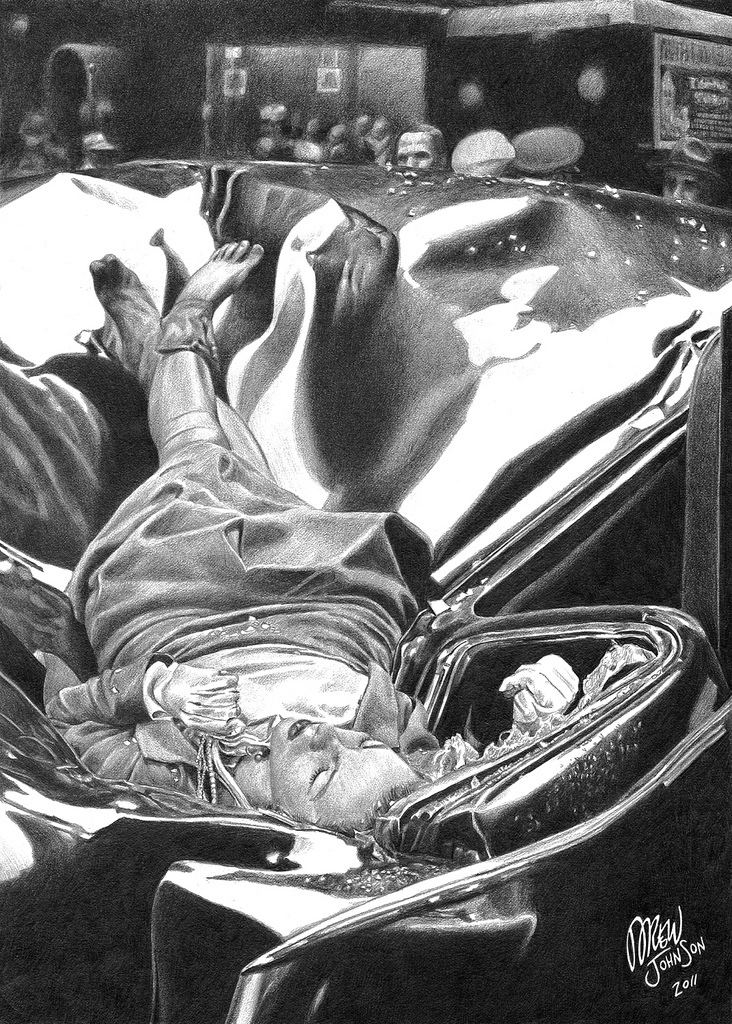
On April 30, 1947, McHale took a train from New York to Easton, Pennsylvania to visit Rhodes. The next day, after leaving Rhodes' residence, she returned to New York City and went to the Empire State Building where she jumped from the 86th floor observatory.

Rhodes did not notice any indication of suicide before McHale left. Detective Frank Murray found her suicide note in a black pocketbook next to her neatly folded cloth coat over the observation deck wall which read:
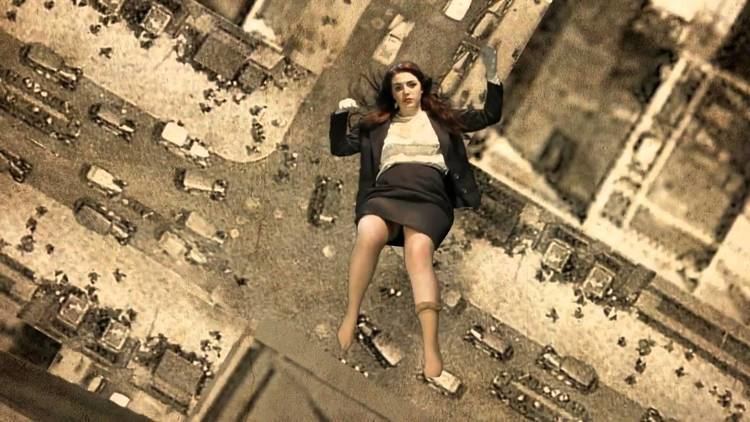
I don't want anyone in or out of my family to see any part of me. Could you destroy my body by cremation? I beg of you and my family – don't have any service for me or remembrance for me. My fiance asked me to marry him in June. I don't think I would make a good wife for anybody. He is much better off without me. Tell my father, I have too many of my mother's tendencies.
Her body was identified by her sister, Helen Brenner.
According to her wishes, she was cremated with no memorial, service or grave.
Legacy
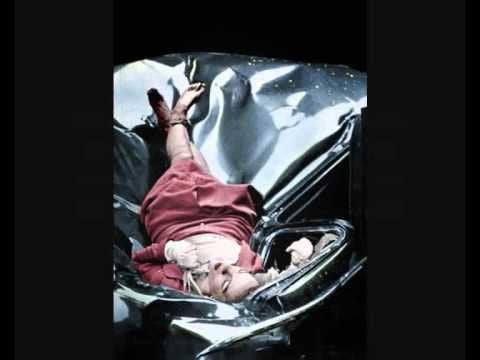
The photo of her body, taken by Robert Wiles, has been compared to the photograph by Malcolm Wilde Browne of the self-immolation of Vietnamese Buddhist monk Thích Quảng Đức who burned himself alive at a busy Saigon road intersection on June 11, 1963, which is widely regarded as among the most iconic suicide photographs. Ben Cosgrove of Time described the photo as "technically rich, visually compelling and [...] downright beautiful". Cosgrove described her body as "resting [or] napping rather than [...] dead" and appears as if she is "daydreaming of her beau".
Andy Warhol used Wiles' photo in one of his prints entitled Suicide (Fallen Body).
Her picture was also used on the cover of Saccharine Trust's album, "Surviving You Always," released in 1984 by SST Records.
